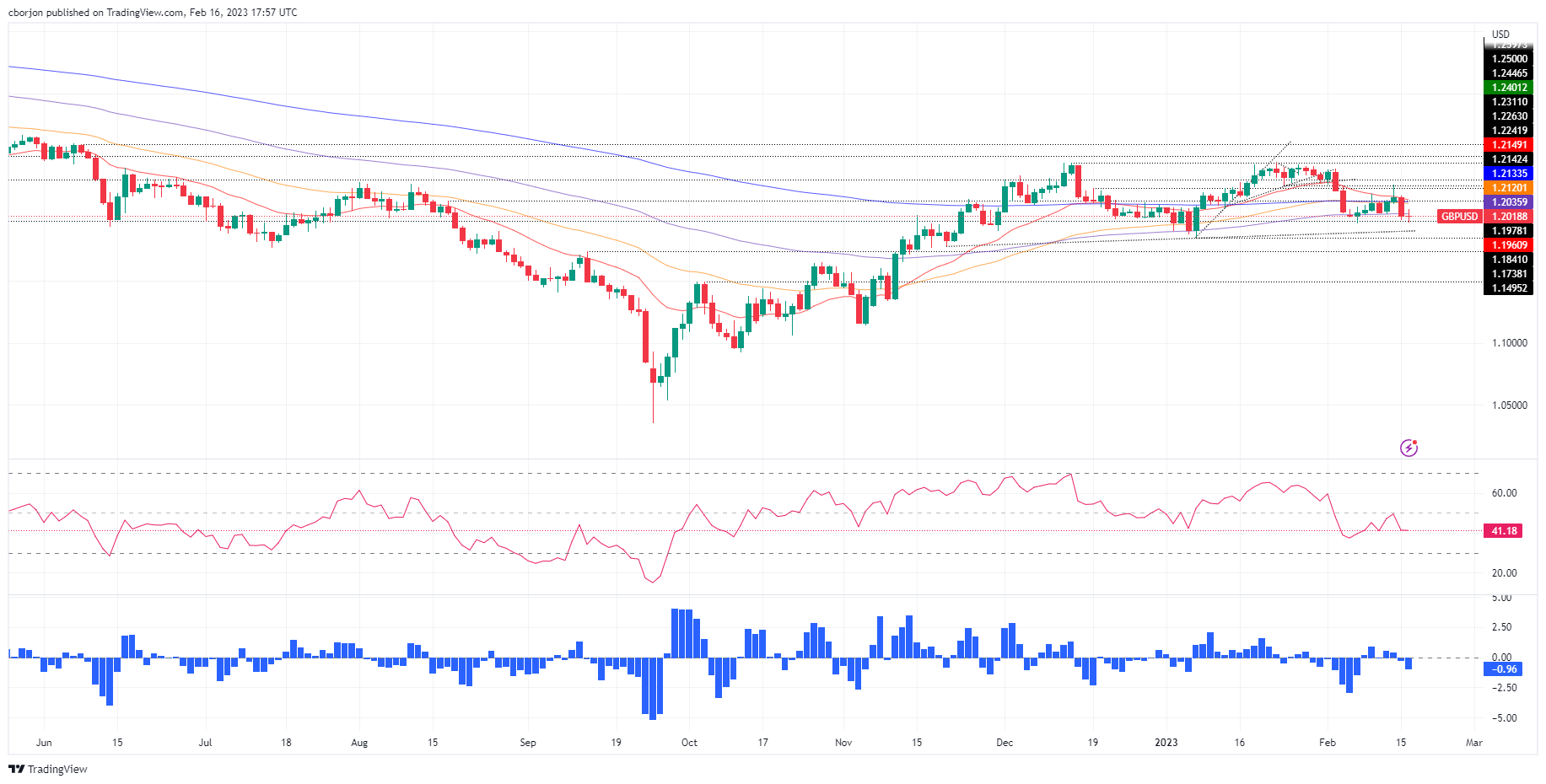- Analytics
- News and Tools
- Market News
- GBP/USD seesaws around 1.2010s after hitting a low below 1.2000 on US PPI data
GBP/USD seesaws around 1.2010s after hitting a low below 1.2000 on US PPI data
- GBP/USD is registering minuscule losses of 0.05% on Thursday.
- The jump in producer prices in the US and strong labor market data would keep the Fed tightening monetary policy.
- GBP/USD Price Analysis: Daily close below the 100-day EMA will cement the downward bias.
The GBP/USD is subdued in the mid-North American session spurred by a jump in producer inflation in the United States (US). In contrast, Wednesday’s UK inflation data weakened the Pound Sterling (GBP) as inflation slowed. Hence, the GBP/USD is trading around the 1.2000/15 range, below its opening price.
The US PPI uptick and the tight labor market are likely to pressure the Federal Reserve
The US Bureau of Labor Statistics (BLS) revealed that the Producer Price Index in January increased by 0.7% from December, which was higher than the expected jump of 0.4%. Excluding items prone to rapid price changes, the so-called core PPI rose by 0.5% vs. an estimated increase of 0.3%. Although the year-over-year data was lower than the previous month, the monthly figures indicate that inflation is persistently high and may require additional actions by the Federal Reserve to address it.
Following the data release, the GBP/USD slid from around the daily pivot point at 1.2060 and dropped towards the 1.1978 area before reclaiming the 1.2000 figure.
At the same time, Initial Jobless Claims for the week ending on February 11 came at 194K, beneath the prior reading of 196K, and showed the labor market’s resilience. Albeit high-tech companies announced layoffs, unemployment claims lower reads would pressure the Federal Reserve, and it might open the door for additional tightening than foreseen.
In the meantime, the Philadelphia Fed Manufacturing Index plunged sharply to -24.3 vs. -7.4 estimates by analysts. The poll delivered comments by producers which said that input prices are rising after ten months of cooling down.
Across the pond, a softer Consumer Price Index (CPI) in the UK, down to 10.1% from 10.5% in December, on an annual basis. UK bond yields eased after the data release as a reflection that the Bank of England (BoE) would not need to tighten monetary conditions aggressively.
Given the backdrop, the GBP/USD might extend its losses due to recent data in the United States (US), which would trigger a reaction by the Fed. Money market futures expect at least two 25 bps interest rate increases, which will lift the Federal Funds Rate (FFR) to the 5-5.25% range. That said, further GBP/USD downside is expected, with sellers already dragging prices below the 20, 50, and 100-day Exponential Moving Averages (EMAs).
GBP/USD Technical analysis
The GBP/USD daily chart portrays the pair as neutral to downward biased. Thursday’s price action shows sellers pushing the exchange rate to close below the 100-day EMA at 1.2035. That would cement the downward bias, exposing the 1.2000 figure, followed by February’s low at 1.1960 and the psychological 1.1900 figure. As an alternate scenario, if the GBP/USD reclaims the 100-day EMA, that could pave the way for 1.2100.

© 2000-2024. All rights reserved.
This site is managed by Teletrade D.J. LLC 2351 LLC 2022 (Euro House, Richmond Hill Road, Kingstown, VC0100, St. Vincent and the Grenadines).
The information on this website is for informational purposes only and does not constitute any investment advice.
The company does not serve or provide services to customers who are residents of the US, Canada, Iran, The Democratic People's Republic of Korea, Yemen and FATF blacklisted countries.
Making transactions on financial markets with marginal financial instruments opens up wide possibilities and allows investors who are willing to take risks to earn high profits, carrying a potentially high risk of losses at the same time. Therefore you should responsibly approach the issue of choosing the appropriate investment strategy, taking the available resources into account, before starting trading.
Use of the information: full or partial use of materials from this website must always be referenced to TeleTrade as the source of information. Use of the materials on the Internet must be accompanied by a hyperlink to teletrade.org. Automatic import of materials and information from this website is prohibited.
Please contact our PR department if you have any questions or need assistance at pr@teletrade.global.















